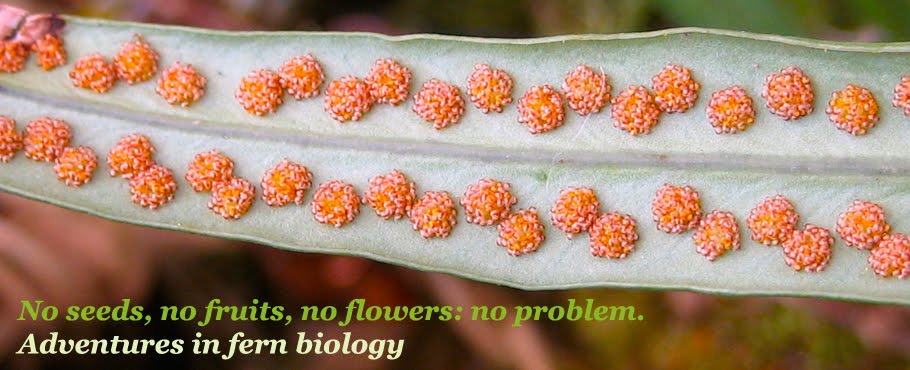I'm thrilled to announce that a final version of the third chapter of my PhD thesis, which was published in provisional proof version months ago, has finally been posted on the journal's website, BMC Evolutionary Biology. If you're interested in reading about the evolutionary history of the fern genus Dryopteris in North America, you can find the paper here (or here's a direct link to the PDF). BMC is a collection of open-access journals, so you can download the paper for free. If you're really interested in Dryopteris and either feel like paying for articles or are associated with a university and have library access, you can find the papers corresponding to my chapters 1 and 2 online as well. You can also email me at sessa DOT emily AT gmail DOT com and I'll be happy to send you reprints (are they called that anymore if they're not actually printed out?). Here are links to the full set of what's published thus far:
- Phylogeny, divergence times, and historical biogeography of New World Dryopteris (Dryopteridaceae) (= ch. 1). Sessa, Zimmer, Givnish 2012 AJB 99(4): 730.
- Reticulate evolution on a global scale: A nuclear phylogeny for New World Dryopteris (Dryopteridaceae) (= ch. 2). Sessa, Zimmer, Givnish 2012 MPE 64(3): 563.
- Unraveling reticulate evolution in North American Dryopteris (Dryopteridaceae) (= ch. 3). Sessa, Zimmer, Givnish 2012 BMC Evol Biol 12: 104.
I'm proud of each of these papers for different reasons, but this third one is probably my favorite, because it tells the story that got me interested in Dryopteris in the first place. This group in North America has been suspected of having undergone reticulate evolution via allopolyploidy ever since botanists started looking at them over a hundred years ago, and many hypotheses have been suggested to explain the relationships among the 13 species on this continent (see Figure 1).
The most widely accepted of these theories involves a missing, putatively extinct diploid ancestor of several of the allopolyploids, but no one had ever tested this using DNA sequence data. Figure 6 from the paper summarizes the results of my analyses, which unequivocally supported this hypothesis, known as the "D. semicristata" hypothesis after the missing ancestor.
I also included a figure showing the range maps of these taxa up above, because the final pieces of my PhD puzzle focus on transgressive trait expression and physiological ecology of these ferns. Hopefully you can see in the maps that several of the allopolyploids have ranges that are transgressive relative to one or both parents - meaning their ranges extend beyond those of their parents. This suggests that the polyploids, which are hybrids between those parental species that then underwent whole genome duplication, likely possess some physiological or morphological features that are distinct from the parents and that have allowed them to expand their ranges and coexist at a regional level with their progenitor species. The two final papers resulting from my PhD explore these ferns' physiology using field and common garden experiments. The first is in review right now, and the second awaits publication of the first. Stay tuned for more news about that in the coming months.




1 comment:
Great papers Emily and fantastic figures. I look forward to seeing your final papers published.
Post a Comment